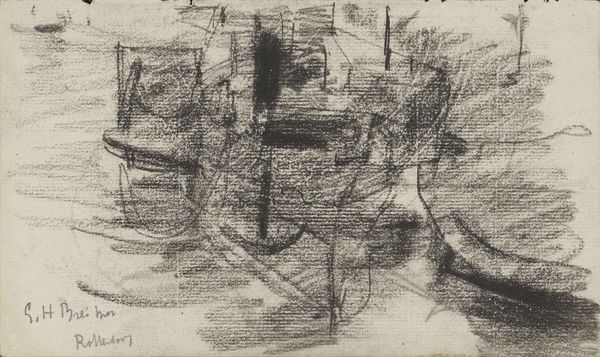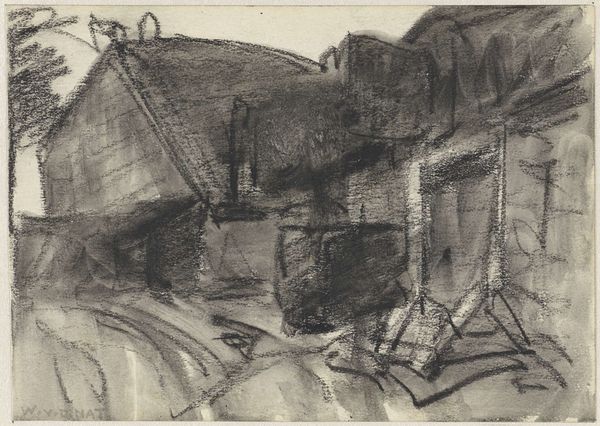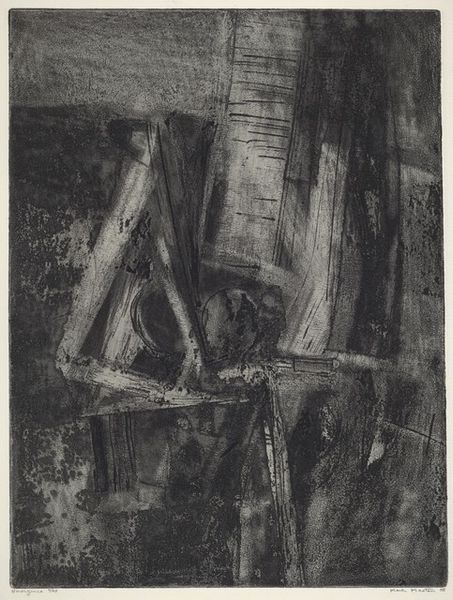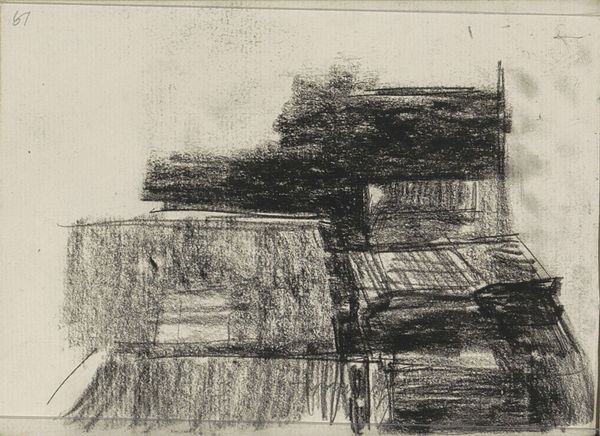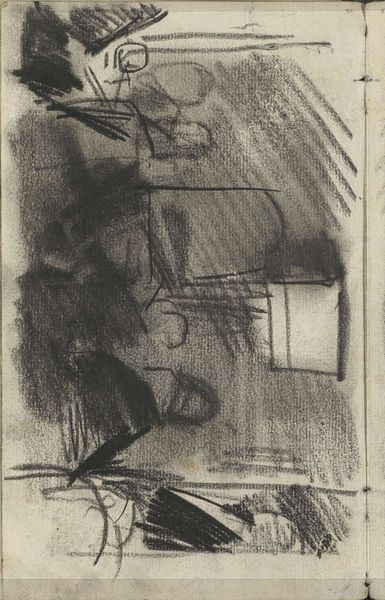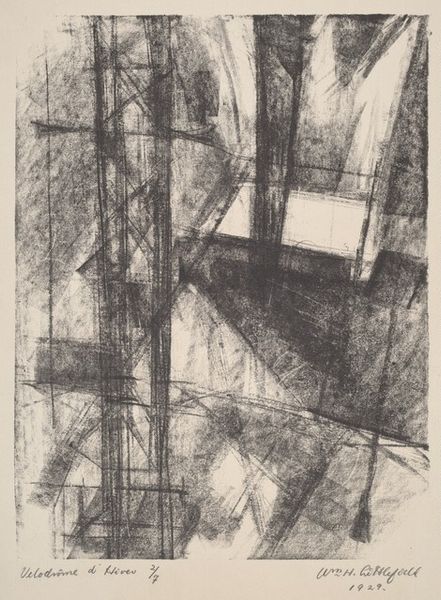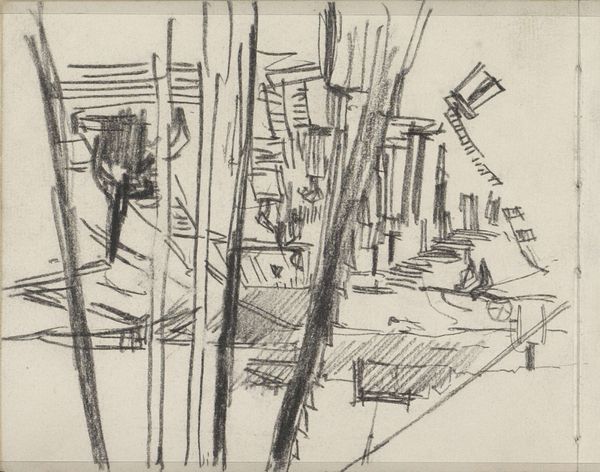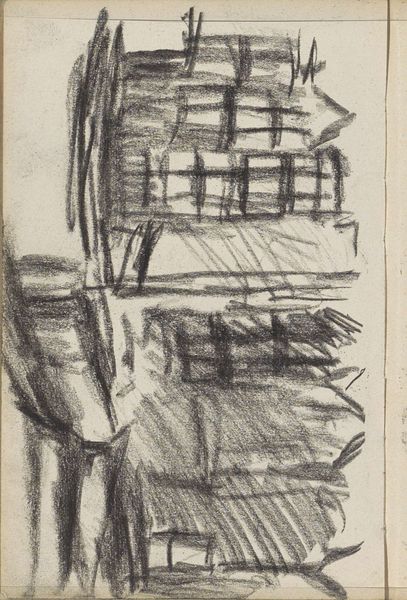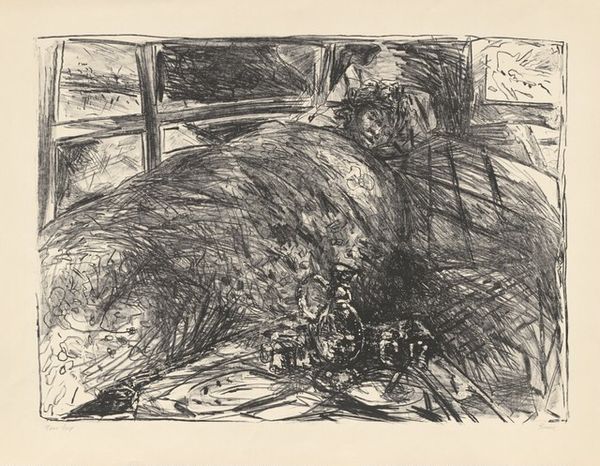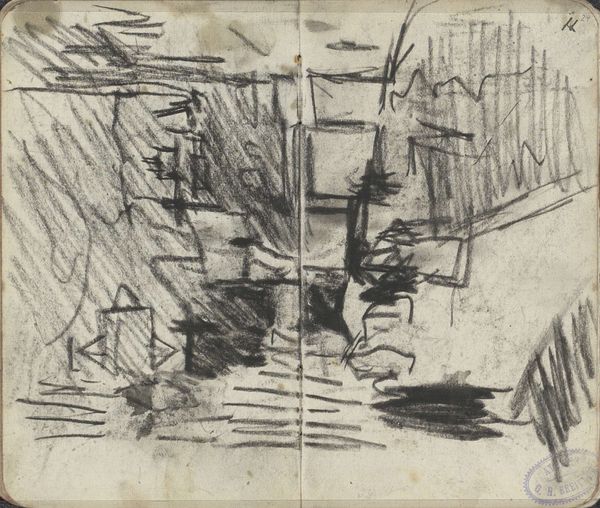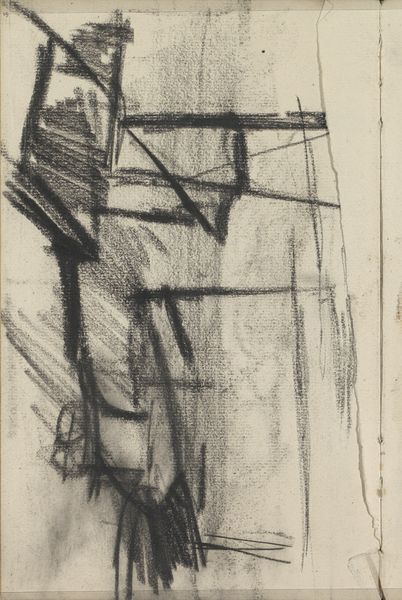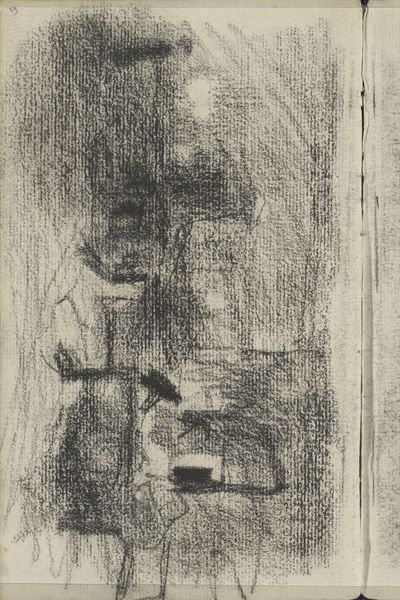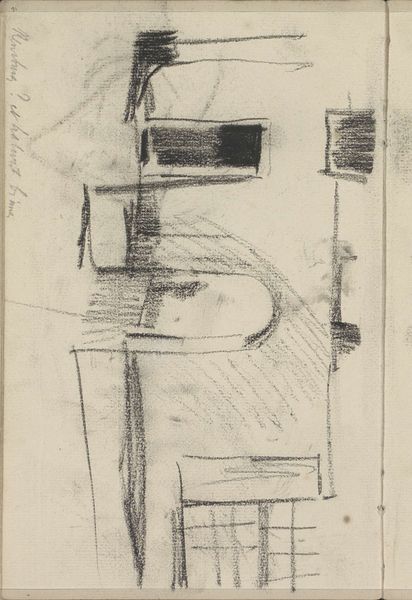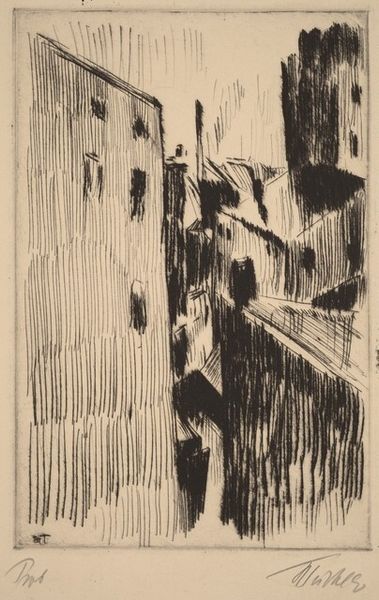![Vélodrome d'Hiver [horizontal format] by William Horace Littlefield](/_next/image?url=https%3A%2F%2Fd2w8kbdekdi1gv.cloudfront.net%2FeyJidWNrZXQiOiAiYXJ0ZXJhLWltYWdlcy1idWNrZXQiLCAia2V5IjogImFydHdvcmtzLzIzMDA0YWU0LTUzYzQtNDc1My1iZDZkLTYyODZkY2I0OTRhMC8yMzAwNGFlNC01M2M0LTQ3NTMtYmQ2ZC02Mjg2ZGNiNDk0YTBfZnVsbC5qcGciLCAiZWRpdHMiOiB7InJlc2l6ZSI6IHsid2lkdGgiOiAxOTIwLCAiaGVpZ2h0IjogMTkyMCwgImZpdCI6ICJpbnNpZGUifX19&w=1920&q=75)
print, graphite, charcoal
# print
#
abstract
#
geometric
#
graphite
#
charcoal
#
modernism
Dimensions: image: 281 x 214 mm sheet: 360 x 280 mm
Copyright: National Gallery of Art: CC0 1.0
Editor: So this is "Vélodrome d'Hiver" by William Horace Littlefield, created in 1929, using graphite and charcoal. It’s so textural; the geometric forms create a sort of uneasy feeling. What’s your take on it? Curator: The "Vélodrome d'Hiver" offers an important intersection for discussing modernism, social memory, and the politics of space. Considering it was made in 1929, how does its abstracted depiction of a cycling stadium, a place of public spectacle and leisure, resonate with the growing social anxieties and the looming economic depression of that era? Editor: Hmm, I hadn’t really thought about the social context. It seems almost divorced from reality, like a deconstructed memory. Curator: Exactly! The artist uses abstraction to create a fragmented narrative. And later, tragically, the Vélodrome d'Hiver became a site of the Holocaust in France. Editor: That is... chilling. Does knowing that impact how we should view the work? Curator: Absolutely. The artwork gains another layer of meaning when contextualized with the terrible historical events of the 20th century. The uneasy feeling you described can then be understood as a premonition of a dark future. Consider how places and buildings often carry unintended or reclaimed identities. Editor: It's incredible how art can unintentionally carry social weight across time, informing perspectives about history. Curator: Yes. It challenges us to reflect on how sites of pleasure and leisure can transform into locations of trauma and oppression, urging us to remember and resist similar oppressions in the present.
Comments
No comments
Be the first to comment and join the conversation on the ultimate creative platform.
